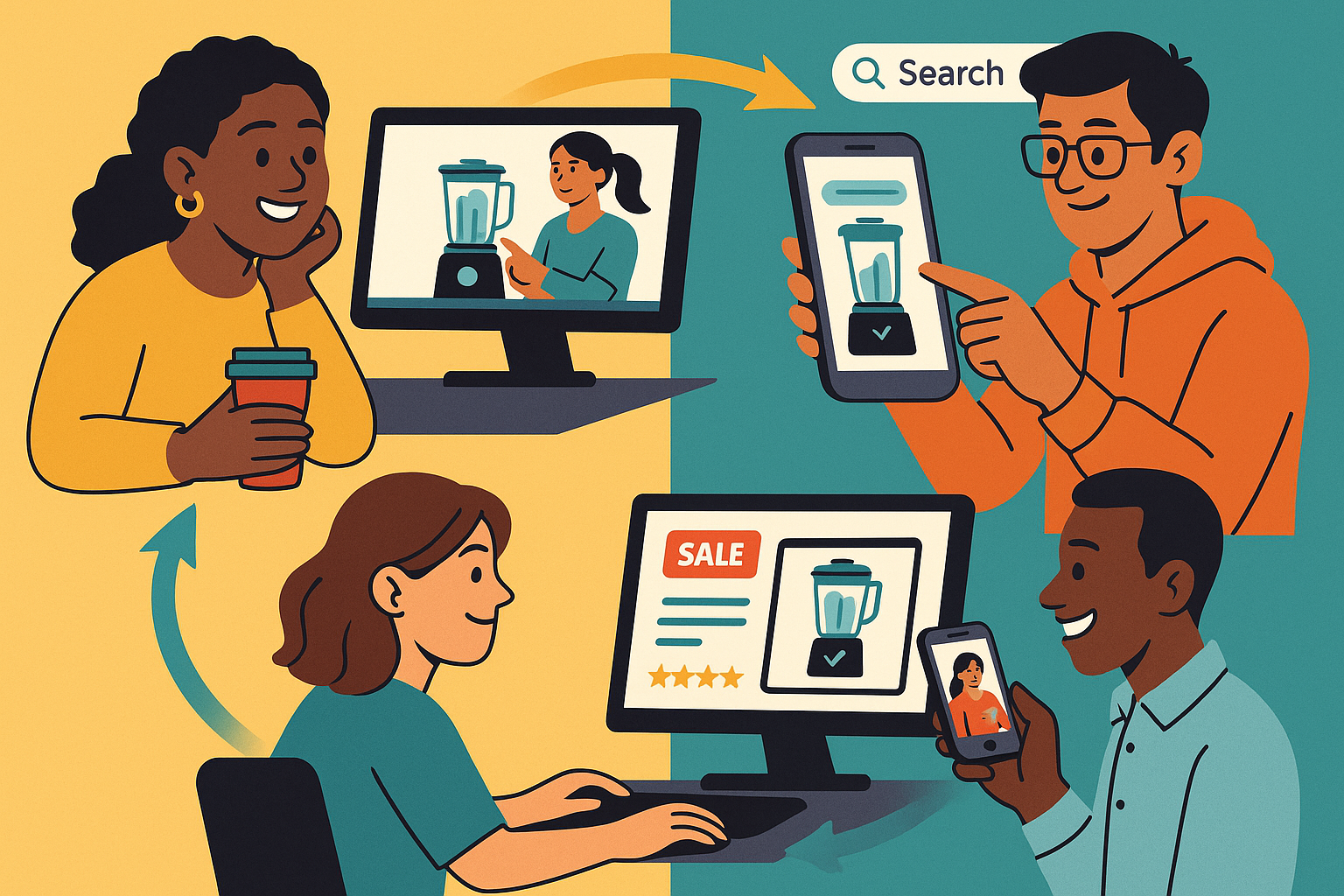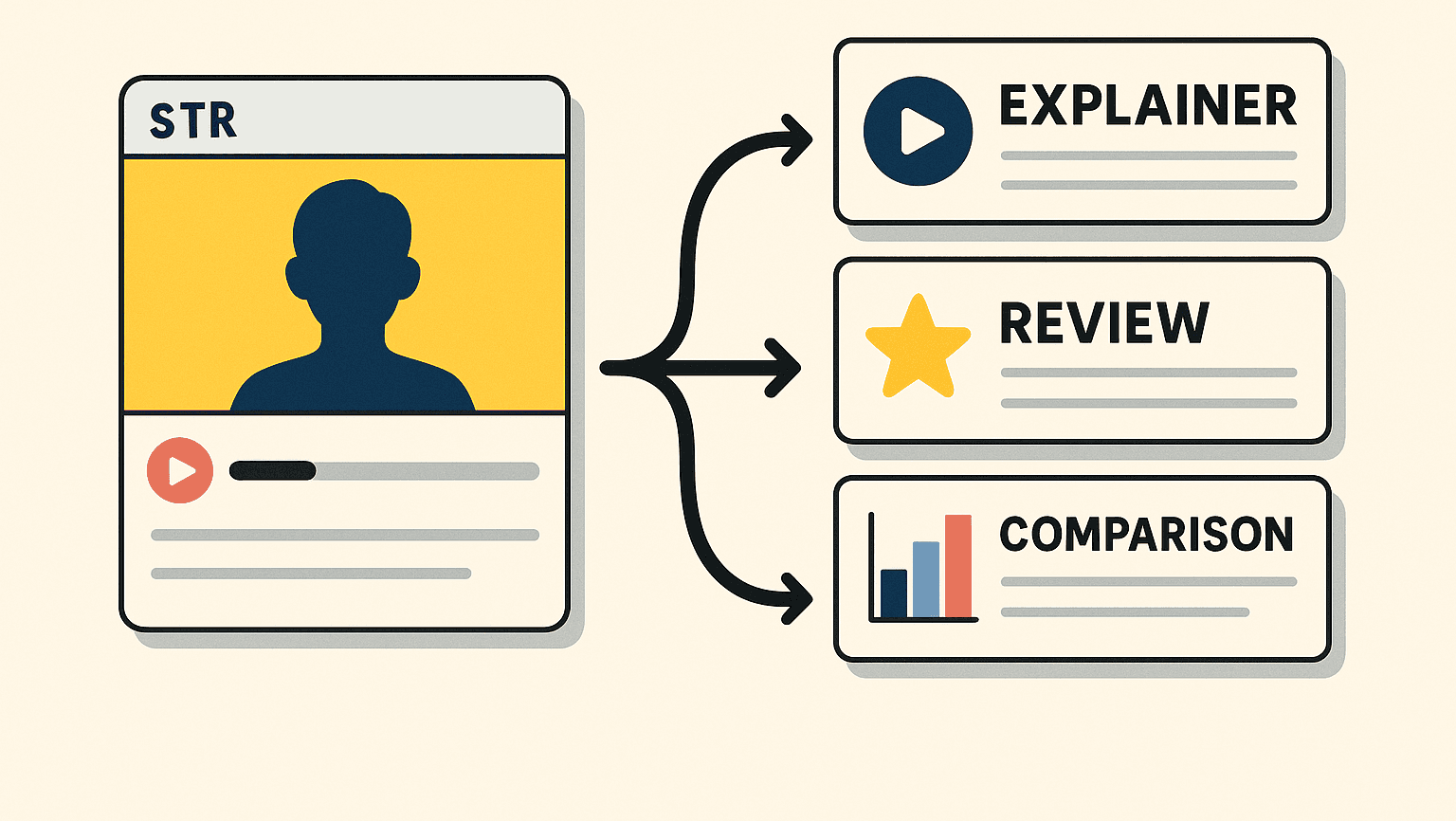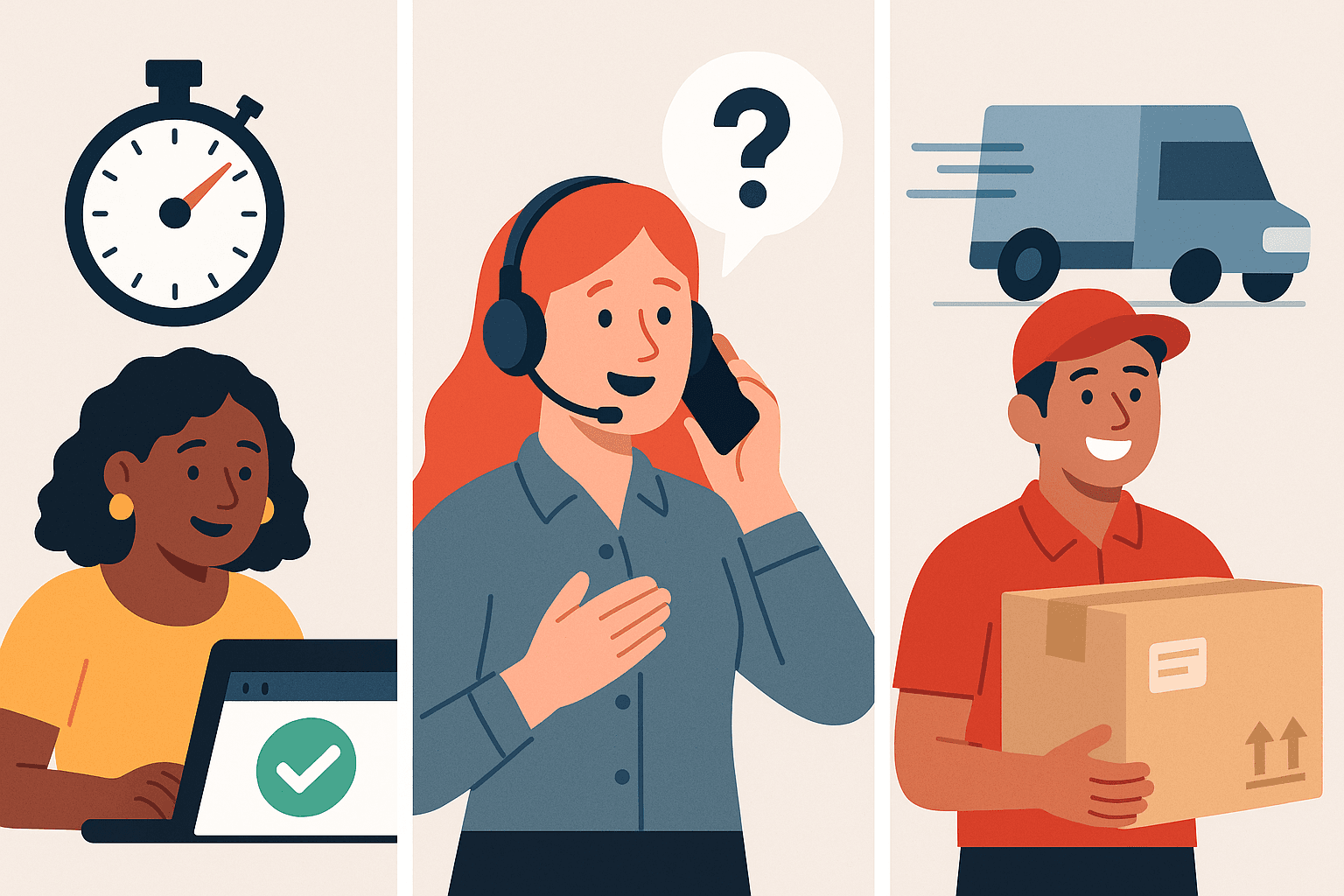Sequence to Win: Video First or Search First? Here’s the Playbook

TL;DR
- ‘Researchers’ convert on video→search. Education first, then detail and price check to commit. Matching depth to the moment reduces cognitive load and speeds decisions.
- ‘Smart savers’ convert on search→video. Deal first, then reassurance via reviews or demos. Matching depth to the moment reduces cognitive load and speeds decisions.
- Design landing pages per route. Match expectation or lose confidence.
Why This Matters Now
There’s a myth that people “start” on one platform and “end” on another. Reality?
Consumers are cross-platform goldfish with the memory of an elephant.
They jump from YouTube to Google, from TikTok to product pages, and back again — not because they’re fickle, but because each stop gives them a different kind of confidence.
- Search provides control — people type what’s in their heads.
- Video provides validation — they see how something actually works.
When your marketing doesn’t sequence these moments, you force customers to do the heavy lifting: searching twice, comparing endlessly, doubting unnecessarily.
When you do sequence them, you turn chaos into choreography — and buyers glide instead of grind.
The Two Main Routes (And the People Who Take Them)
1. The Researchers: Video → Search
These are your deep divers. They want to see before they believe.
They’ll start with explainer videos, unboxings, and reviews to visualize what they’re getting into. Only when their inner skeptic is satisfied do they open a new tab and start typing: “best price for X,” “official site,” “is it worth it?”
For them, video builds emotional readiness; search finalizes rational confidence.
If you flip the order, they’ll feel rushed — like someone proposing on the first date before you’ve even ordered drinks.
2. The Smart Savers: Search → Video
Then there’s the “I-know-what-I-want-but-prove-it” crowd.
They start with search because they’re hunting deals, reading specs, and skimming comparisons. But right before buying, they hit pause: “Wait, does it really look that good in real life?”
That’s when they turn to video — reviews, demos, even quick TikToks — to reassure themselves that the deal they found isn’t too good to be true.
For them, search filters the noise, and video closes the trust gap.
The Golden Rule: Match Depth to the Moment
The order isn’t random; it’s behavioral.
If the user is early and uncertain, start with storytelling and proof (video first).
If the user is later and calculating, lead with clarity and validation (search first).
Either way, each step should make the next one easier, not redundant.
When done right:
- People spend less time comparing and more time converting.
- The same creative performs better because it shows up in the right sequence.
- Your analytics finally start telling a coherent story instead of 17 conflicting ones.
What to Do This Month
-
Detect the route by signals.
Look for watch time, query intent, and browsing depth.
Someone watching 90 seconds of an explainer probably needs a search retarget ad, not another awareness spot. -
Pair creatives with destination pages that match expectation.
If your video reassures, your landing page should close.
If your search ad educates, your page should teach, not sell.
Misalignment here is the marketing version of inviting someone to dinner and handing them a bill. -
Measure incremental lift and time-to-decision.
Don’t just track conversions; track confidence speed.
How long between first touch and purchase? Sequencing done right should shorten that timeline. -
Keep both routes.
If both video→search and search→video deliver lift, keep both.
Different minds, same money.
Real-World Example
Let’s say you’re launching a new smart blender (because of course you are).
- Video-first route: Show a 30-second clip of the blender making smoothies without spilling a drop. The viewer thinks, “Wow, I need that.” Then, when they search for “smart blender price,” your ad appears — not as an interruption, but as the logical next step.
- Search-first route: A shopper searches “best blender for frozen fruit.” Your ad leads them to a comparison page. After they click away, your retargeting video shows real customers crushing ice cubes like it’s therapy. Result: confidence and conversion.
This is orchestration, not overlap.
It’s about knowing what reassurance they need next, not just where they came from.
Evidence & Caveats
Think with Google’s research on video-plus-search behavior shows that pairing both channels reduces friction and boosts “decision confidence.”
BCG’s influence-map framework reinforces the same idea — plan by what changes decisions, not by which stage someone is in.
If you’re still clinging to funnels, that’s fine — just remember most modern journeys look more like spaghetti than a slide.
FAQs & Objections
“What if both sequences work?”
Perfect. Fund both. Just make sure your messaging matches each route’s mindset. It’s not a binary choice; it’s behavioral coverage.
“Is this channel-specific?”
No. The principle scales beyond Google and YouTube — think TikTok plus Amazon, Instagram plus Shopify. Anywhere people research and confirm applies.
“How do we know which user belongs to which group?”
Use soft signals: dwell time, query language, engagement depth.
People tell you who they are by how they act, not by what box you put them in.
“Can AI automate this?”
Eventually, yes — but only if you feed it clean, labeled outcomes. (Otherwise, you’re just automating chaos.)
“Won’t this double our creative workload?”
Only slightly — but the returns justify it.
You’re not making twice the content; you’re sequencing the same assets intelligently.
Key Takeaway: Orchestrate for Confidence, Not Clicks
Sequencing isn’t about chasing algorithms — it’s about guiding humans through uncertainty.
When you meet them where they actually are — sometimes searching, sometimes watching — you make decisions easier, faster, and happier.
The brands that master sequencing don’t spend more.
They just stop forcing people to self-educate and start earning their confidence early.
Because when journeys flow naturally, conversions follow inevitably.
Related reading:
Read similar content
Similar topics

Creators as the New SEM: Build Searchable Trust, Not Just Impressions
When creators become media channels, brands win by making their content discoverable, trustworthy and measurable—not just viral.

Design for Stream→Search: Sequencing Content That Survives the Algorithm
Why brands need content ladders that move people from passive scrolling to active searching—and how to build sequences that compounding attention.

Speed Is a Feature: Site, Support, and Delivery That Convert
Operational speed—page loads, helpful support, clear delivery—now decides who wins the cart.

Loyalty That Changes Behavior (Not Just Points)
Design rewards and service advantages that make people act differently—return more, spend more, advocate more.